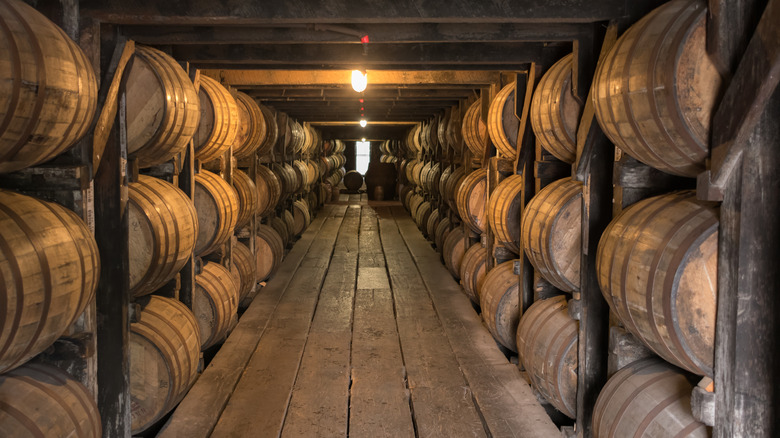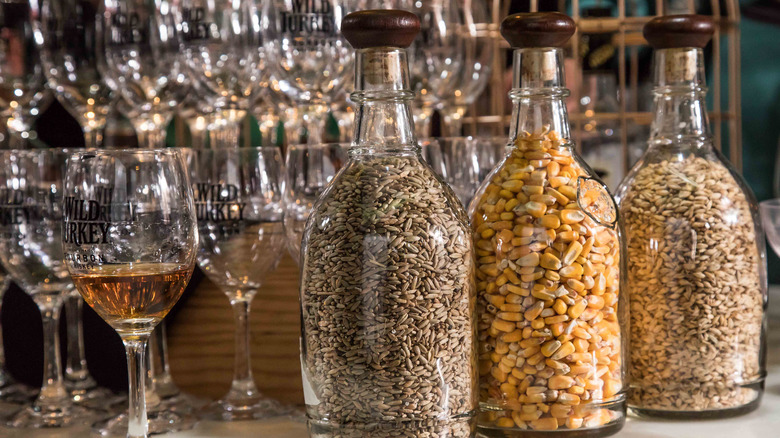The Bottled In Bond Act Of 1897 Established Quality Bourbon In The US
Today's world of American whiskey is more than simple sipping on a casual day off. It is, in many ways, an art, craft, passion, and collaborative reach for excellence by both makers and imbibers. With an ever-widening range of flavors, whiskey-making techniques, and distillery distinctions, it's no wonder that craft cocktail creations arise from bar masters rather than simply bartenders. Even amidst the deeply rooted whiskey culture, however, the core idea remains: the whiskey must be good. Really good in some scenarios.
That's why a little-known U.S. government act from 125-plus years ago is having a revival of sorts. Intentions of the Bottled in Bond Act of 1897 were to establish a standardized definition of legitimate spirits based on quality and predefined criteria, explains USLegal. This provided consumers with a way to verify authenticity and know exactly what was sliding down their throats. It was so successful that the practice of bottled-in-bond spirits never actually went away — it just faded from the spotlight after serving a crucial purpose in the wild, unregulated days of bootleggers, moonshiners, and unscrupulous distillers filling bottles with questionable ingredients.
Though any type of alcoholic spirits could participate in the process established by the Bottled in Bond Act, whiskeys and bourbon makers, in particular, embraced to chance to establish transparency and quality assurance within their trade, according to Rabbit Hole Distillery. In return, the act came through for them, establishing high-quality American bourbon and whiskey standards for generations to come.
Bottled in Bond standards then and now
Whiskey distillers since 1897 have had no obligation to adhere to standards set by the Bottled in Bond Act, but many do. It's like a badge of honor among high-quality whiskey and bourbon makers, giving connoisseurs the assurance that specific practices have been observed. Those requirements remain the same today as they did then.
To bear the stamp or label signifying bottled-in-bond adherence, the batch of spirits must come from a single distillery, the same distiller, and have been produced within a single distillation season, explains American Whiskey. It must reside in a facility that's federally bonded, mature there for at least four years, and be bottled at 100-proof, which equates to 50% alcohol by volume (ABV).
Whiskey makers today get a lot of traction from the program, establishing themselves as skilled experts in the industry while also presenting unique batches and flavors resulting from each distillation season. It also comes with a tax perk: the option to delay excise tax payments until the spirit reaches the mandated four-year maturity, notes Food & Wine. Even mainstream distillers such as Jack Daniels and Jim Beam have created bonded versions of their products in recent years.
Small-batch bourbon companies are jumping on the bonding bandwagon as well, according to Whiskey Advocate, with some new distilleries eagerly reaching their four-year aging requirement. All the American bottled-in-bond bourbons recommended by Whiskey Advocate come from Kentucky, where bourbon tours abound, including a bonded tour at New Riff Distillery.

